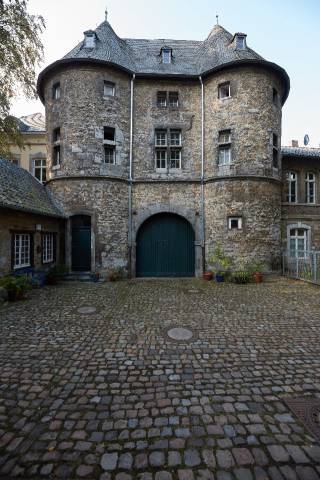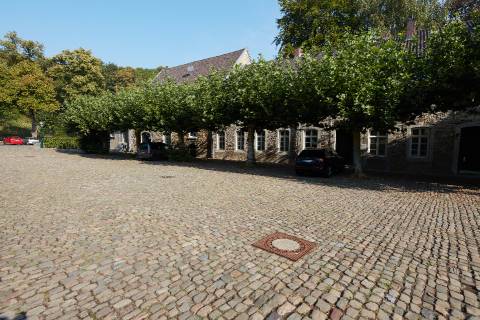|
Sigma 14-24mm f/2.8 DG HSM ART - Review / Test Report - Sample Images & Verdict |
|
Lens Reviews -
Canon EOS (Full Format)
|
|
Page 3 of 3

Sample Images
Click on an image for downloading the full-size variant.
 |
| Make | Canon |
| Model | Canon EOS 5DS R |
| ISO Speed | 200 |
| Focal Length | 14.0mm |
| Aperture: | f/2.8 |
| Exposure | 1/1000s |
 |
| Make | Canon |
| Model | Canon EOS 5DS R |
| ISO Speed | 200 |
| Focal Length | 21.0mm |
| Aperture: | f/11.0 |
| Exposure | 1/100s |
 |
| Make | Canon |
| Model | Canon EOS 5DS R |
| ISO Speed | 800 |
| Focal Length | 14.0mm |
| Aperture: | f/7.1 |
| Exposure | 1/160s |
 |
| Make | Canon |
| Model | Canon EOS 5DS R |
| ISO Speed | 200 |
| Focal Length | 24.0mm |
| Aperture: | f/2.8 |
| Exposure | 1/2500s |
 |
| Make | Canon |
| Model | Canon EOS 5DS R |
| ISO Speed | 200 |
| Focal Length | 24.0mm |
| Aperture: | f/10.0 |
| Exposure | 1/200s |
 |
| Make | Canon |
| Model | Canon EOS 5DS R |
| ISO Speed | 200 |
| Focal Length | 17.0mm |
| Aperture: | f/10.0 |
| Exposure | 1/160s |
 |
| Make | Canon |
| Model | Canon EOS 5DS R |
| ISO Speed | 200 |
| Focal Length | 24.0mm |
| Aperture: | f/10.0 |
| Exposure | 1/320s |
 |
| Make | Canon |
| Model | Canon EOS 5DS R |
| ISO Speed | 1000 |
| Focal Length | 14.0mm |
| Aperture: | f/2.8 |
| Exposure | 1/30s |
 |
| Make | Canon |
| Model | Canon EOS 5DS R |
| ISO Speed | 200 |
| Focal Length | 24.0mm |
| Aperture: | f/10.0 |
| Exposure | 1/80s |
 |
| Make | Canon |
| Model | Canon EOS 5DS R |
| ISO Speed | 200 |
| Focal Length | 14.0mm |
| Aperture: | f/10.0 |
| Exposure | 1/320s |
Competition
The high-end ultra-wide zoom lens category is a quite crowded place - led by the Canon EF 11-24mm f/4 USM L (center below) on the extreme end and the more conventional Canon EF 16-35mm f/2.8 USML L III. In between, you will find the Sigma 12-24mm f/4 DG HSM ART (to the right) and 14-24mm f/2.8 DG HSM ART (to the left) and the Tamron SP 15-30mm f/2.8 Di USD VC G2 (not shown). Performance-wise none is perfect - on a 50 megapixel sensor anyway. Unsurprisingly the EF 16-35mm f/2.8 USM L III is the best of the pack due to its more moderate range. However, if you want to have that extra wide kick, the two Sigma lenses are actually pretty interesting. The Tamron lens is brand new as of the time of this review. If the G1 lens can serve as a guidance, it should be pretty good and it offers an image stabilizer which none of the others does.
 Visual comparison courtesy of camerasize.com.
Visual comparison courtesy of camerasize.com.
Verdict
The Sigma 14-24mm f/2.8 DG HSM ART maintains the overall characteristic of the Sigma 12-24mm f/4 DG HSM ART while providing an extra stop in speed and having a slightly narrower zoom range. The sweet spot - or to be precise: range - is in the low to mid-sections which is a good thing. After all, you aren't buying such a lens for its 24mm setting but for going wide, REALLY wide. The 14mm setting doesn't show any significant weaknesses in resolution. It's usable straight from f/2.8 and impressive at medium apertures. That being said, you have to live with heavy vignetting at f/2.8 and the light-falloff doesn't really disappear when stopping down. The corner quality suffers a bit at 16/20mm f/2.8 but otherwise, the quality remains very high for such a lens. That can't be said of the 24mm setting though. At least on high-resolution sensors, you will have to live with soft corners between f/2.8 and f/5.6. However, the resolution recovers at f/8 and f/11.
Image distortions are surprisingly low for such a lens and substantially better than on the 12-24mm f/4 DG HSM ART.
Flare is always a big topic among ultra-wide lenses because there's usually always some bright thingy (e.g. the sun) in our scene. Lenses with bulb-like front-elements - such as this Sigma - especially vulnerable because stray light can enter the optical path more easily than on conventional lenses. And yes, the Sigma 14-24mm f/2.8 DG HSM ART has its share of issues here. Are they any worse than on similar lenses (from an established player)? Probably not. Truth is that you can force any lens to produce ugly flare effects. If you want to have less flare, you'd have to go for the Canon EF 16-35m f/2.8 USM L III or f/4 USM L IS but these are obviously not quite as wide.
The build quality of the Sigma lens is superb. At least subjectively, it doesn't differ from Canon L class quality. The materials are top notch, everything is tightly assembled and Sigma implemented weather-sealing as well. To be honest, we are big fans of what Sigma is doing here lately. Sigma HSM AF is both fast and near silent. Some may miss the inclusion of an image stabilizer but it is already difficult to maintain a consistent production quality without one. An image stabilizer has always a negative impact on the centering accuracy and such ultra-wide lenses are notoriously tricky in this respect.
In the grand scheme of things, Sigma has produced a winner albeit it isn't flawless. However, to be fair - the presence of flaws is hardly surprising in this specific lens class. The bigger question mark may be whether you are bold enough to carry such a brick. At more than 1.1kg, it's not for the weak. While we surely congratulate Sigma for releasing high-quality lenses into the market, we aren't sure that super-sizing everything for gaining quality is always desirable. It's good for getting fairly high ratings but it reduces the fun factor to some degree - and for most of us, fun is what all this is about.
Optical Quality @ 50mp:
★★★★★
Optical Quality @ 21mp:
★★★★★
Mechanical Quality:
★★★★★
What does this mean ?
|